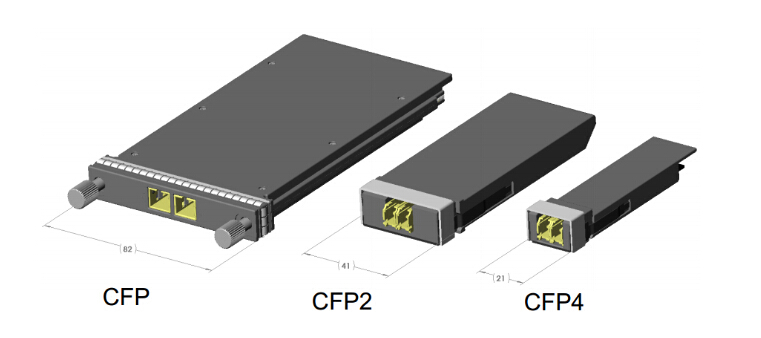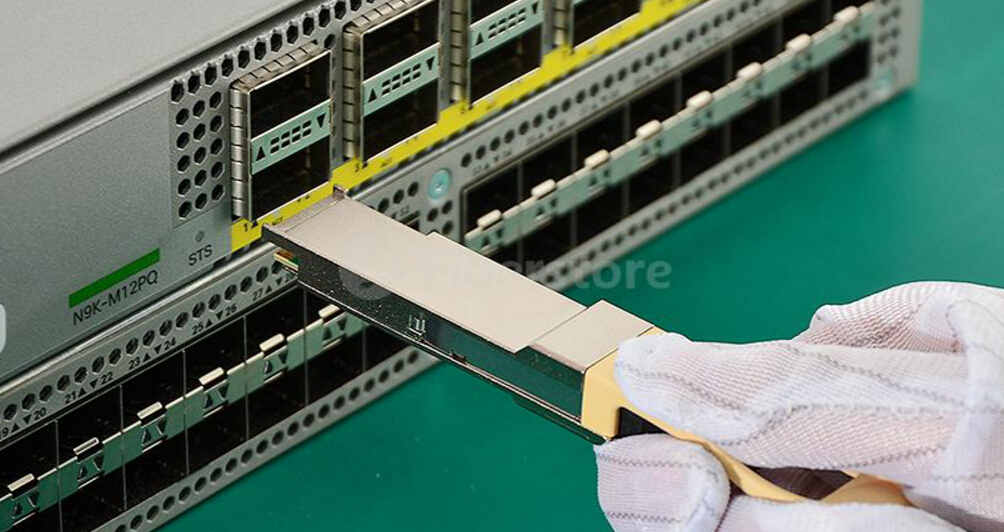With the increasing demands for higher speeds, and greater scalability, many service provider networking environments and enterprise data centers are undergoing an infrastructure transformation to get higher levels of performance and reliability. As speed and performance needs increase, optical transceivers have become an integral part of overall system design. And then 40G and 100G fiber optic transceiver have become preferable choices for more and more data centers as 1G and 10G cannot meet the needs of the bandwidth-hungry applications. Adopting 100G transceiver not only accelerates data flow throughout your data center or enterprise, but also provides CAPEX (capital expenditures), OPEX (operating expenditures) and time savings. This article focuses on the hot 100G transceiver modules for data centers.
When the IEEE finished the first 100G standard for Ethernet networks, the transceiver industry launched an alphabet soup of form factors. The CFP emerged first, “C” for 100, and FP for “Form factor, Pluggable”. The CFP transceiver is specified by MSA between competing manufacturers. The CFP was designed after SFP interface, but is significantly larger to support 100 Gbit/s. While the electrical connection of a CFP uses 10 x 10 Gbit/s lanes in each direction (RX, TX), the optical connection can support both 10 x 10 Gbit/s and 4 x 25 Gbit/s variants of 100 Gbit/s interconnects.
With improvements in technology allowing higher performance and higher density, the development of the CFP2 and CFP4 specifications appeared. While electrical similar, the CFP2 and CFP4 100G transceivers specify a form-factor of 1/2 and 1/4 respectively in size of the CFP. The three modules are not interchangeable, but would be inter-operable at the optical interface with appropriate connectors.

The QSFP28 is the exact same footprint as the 40G QSFP+. The “Q” is for “Quad”. Just as the 40G QSFP+ is implemented using four 10 Gbit/s lanes, the 100G QSFP28 is implemented with four 25 Gbit/s lanes. With an upgraded electrical interface to support signaling up to 28 Gbit/s signals, the 100G QSFP28 makes it as easy to deploy 100G networks as 10G networks. When compared to any of the other alternatives, the 100G QSFP28 increases density and decreases power and price per bit. So it is fast becoming the universal data center form factor for the following reasons.
The QSFP28 100G transeiver increases front-panel density by 250% over QSFP+. The form factor is the same and the maximum number of ports is the same, but the lane speeds are increased from 10 Gbit/s to 25 Gbit/s. The increase in panel density is even more dramatic when compared to some other 100 Gbit/s form factor: 450% versus the CFP2.
The QSFP28 100G transceivers can be based on either VCSELs (for shorter distances on multimode fiber) or silicon photonics (for longer distances on single-mode fiber). The advent of silicon photonics enables QSFP28 transceivers to support any data center reach up to 2 km or more. Silicon photonics provides a high degree of integration.

As a professional manufacturer and supplier in optical communication industry, FS.COM provides a complete range of 100G fiber optic transceivers to meet the potential requirements. We have already prepared the stock of the CFP and CFP2 modules, which can be shipped immediately after ordering. For 100G QSFP28 transceivers, we have 100G SR4 QSFP28 and 100GBASE-LR4 QSFP28 transceivers. With our serious cost control, the prices of all our 100G fiber optic transceivers are much more affordable than the similar products in the market. Furthermore, with the mature coding technology, they can be compatible with many major brands. For more details, please visit www.fs.com or contact over sales@fs.com.